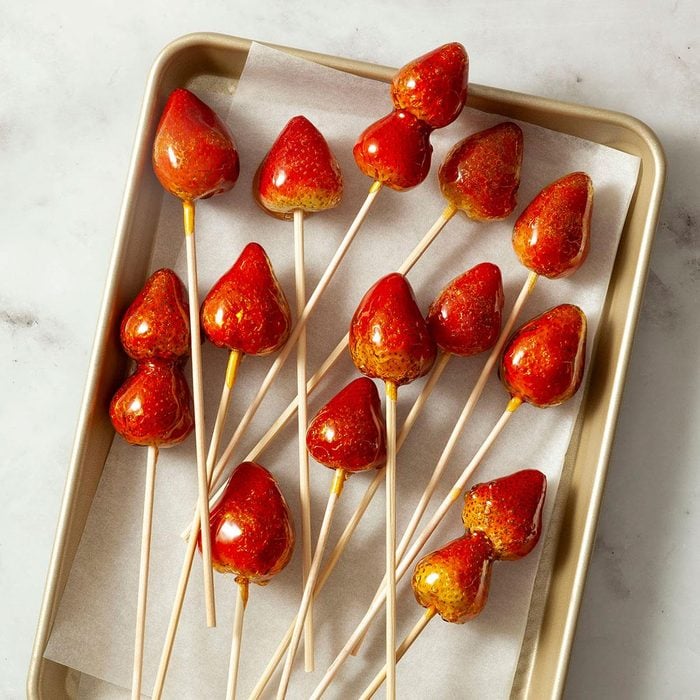As a child living in the historic Chinatown neighborhood of Incheon, South Korea, I’d beg my parents for a tanghulu (糖葫芦) whenever we passed a street vendor selling candied hawthorn berries skewered on sticks. I believed with the certainty of youth that these jewel-like treats must taste like magic crystals that would fill me with sparkling bliss. My parents, however, were far too sensible.
“Tanghulu? What a waste of money,” they would say. “Dust sticks to those things all day long out in the streets. They’ll be hard as rocks. Not worth eating.” As a result, I never tasted tanghulu as a kid, even though my family is from northern China (the home of tanghulu).
When we immigrated to the United States, I forgot all about those delectable-looking Chinese fruit confections—until I traveled to Beijing in college. While exploring the bustling street markets, I encountered tanghulu vendors again and was flooded with memories of forgotten longing. I immediately decided to treat myself to a bamboo skewer of candied hawthorn fruits. But I was surprised by what happened next.
Back in Beijing, as I eagerly snapped into the bite I’d been anticipating for nearly 20 years, I immediately shrank back in pain, wondering if I had chipped a tooth. As it turns out, my parents were right! The tanghulu was hard. The stale sugar sticking to my teeth was unpleasant.
It was another 20 years before I was ready to try tanghulu again. This time, I wanted to make candied strawberries with my 7-year-old son. I believed this strawberry dessert would be a tasty summer fruit recipe and a way to introduce my son to his family’s northern Chinese heritage. The result was a homemade tanghulu recipe that wasn’t nearly as hard to bite into as the one I remember from Beijing. Here’s how to make it at home.
What is tanghulu?
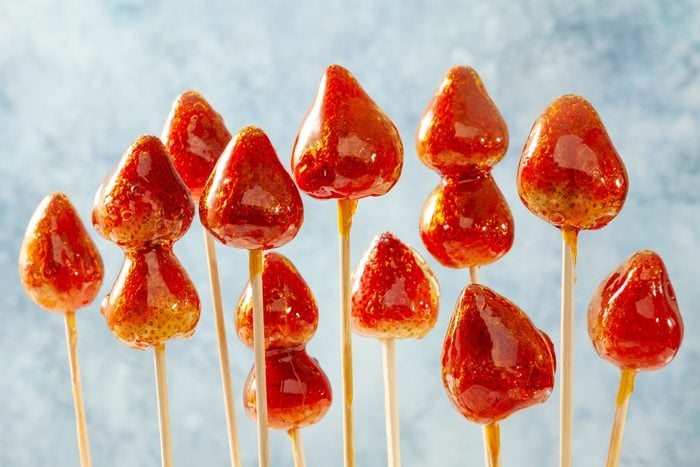
Tanghulu is a Chinese dessert made by dipping bamboo-skewered fruit into a sugary, candy coating. It is traditionally made with hawthorn berries, but you can make tanghulu with different fruits, like strawberries, cherries, kiwis, dragon fruit and pineapple. Festivals are held all over northern China in celebration of this confection, featuring tanghulu made to look like dolls or hearts.
Because tanghulu is primarily enjoyed in the winter (the summer heat can cause the candy shell to melt), many people look forward to it as a part of Chinese New Year celebrations. The shiny red appearance also symbolizes good luck.
History of Tanghulu
Tanghulu is believed to have originated in northern China during the Song Dynasty. When a mysterious illness befell the emperor’s beloved concubine, all the court’s physicians struggled to find a cure. Finally, the emperor brought in an outside doctor who prescribed hawthorn berries simmered in sugar water. The concubine miraculously recovered, and the fame of this sweet and sour remedy spread throughout China.
Tanghulu has recently seen a surge in popularity thanks to the internet. ASMR videos show people joyfully crunching into tanghulu made from all kinds of enticing fresh fruit. These videos, some of which are posted to TikTok, have garnered millions of views, spreading tanghulu around the world.
How to Make Tanghulu (Candied Strawberries)
The process of making tanghulu seems straightforward, but my son and I discovered a handful of tricks:
- Start with firm fruit: Firm fruit won’t slip off the skewer when dipping into the syrup.
- Choose your saucepan wisely: Use a larger saucepan with a good handle so it’s easy to tilt the pan, allowing more space to dip and rotate the skewers.
- Don’t stir the syrup: Stirring the syrup at any point—even after it reaches the hard-crack temperature—is a common candy-making mistake. It will cause the syrup to crystallize, making it cloudy instead of clear. It will become sandy instead of liquid.
- Be careful: Take extra care when making tanghulu because the syrup is extremely hot. Use oven gloves to protect your hands whenever possible.
- Work quickly: The syrup will crystallize as soon as it cools, making it less workable. So keep the parchment-lined baking sheet as close to the saucepan as possible to cut down on time.
Tanghulu Ingredients
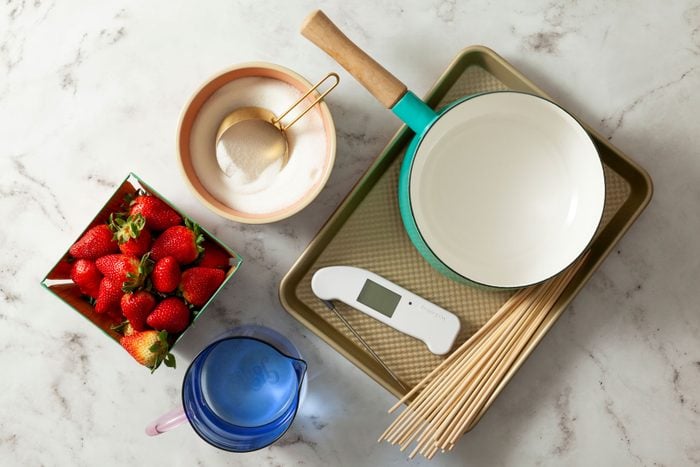
- Firm strawberries: Use firm, slightly unripe strawberries for this tanghulu recipe. Soft, ripe berries will slip off the skewer and leak juice.
- Sugar syrup: We make the sugar syrup using a ratio of two parts granulated sugar to one part water.
Directions
Step 1: Dry the strawberries
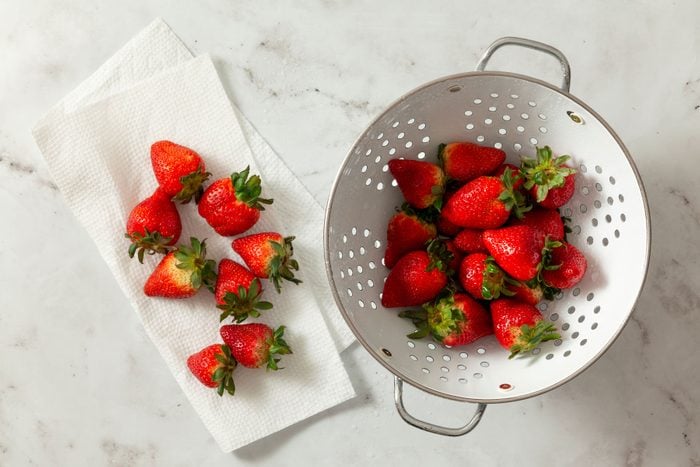
Remove the strawberry stems. Wash the berries and let them dry. The berries must be completely dry, as the syrup will not adhere to wet fruit.
Step 2: Skewer the strawberries
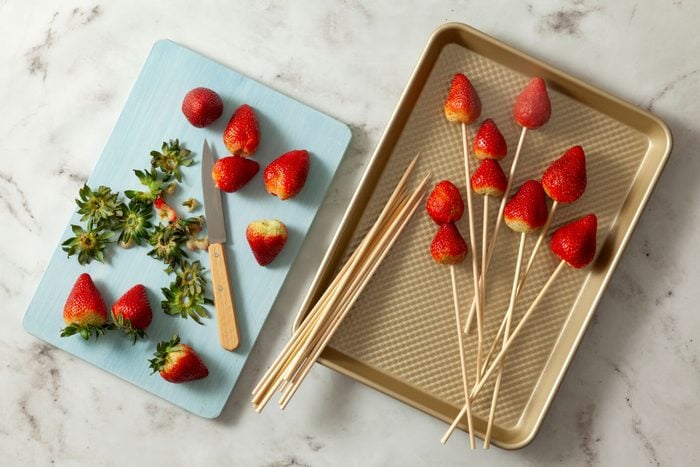
Thread each strawberry onto a wooden skewer, leaving berries toward the tips of the skewers.
Editor’s Tip: You might be able to fit two strawberries onto each skewer, but it’s OK if there’s only one. Adding too many strawberries per skewer will make it more challenging to dip the fruit into the syrup.
Step 3: Make the syrup
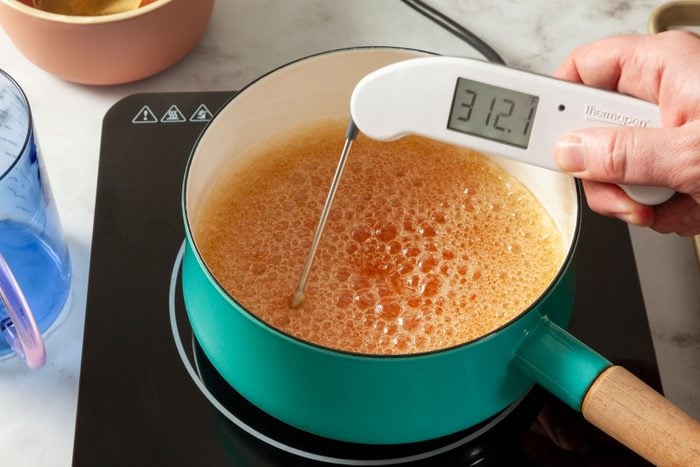
In a large heavy saucepan, combine the sugar and water. Bring the mixture to a boil without stirring. Cook, without stirring, over medium heat until a candy thermometer reads 300° to 310°F (the hard-crack stage). Remove the syrup from the heat.
Editor’s Tip: This should take about 10 minutes, but monitoring the temperature with a candy thermometer is the best way to know when you’ve reached that hard-crack stage. For a visual reference, check out the photos in our guide to making candy.
Step 4: Dip the fruit
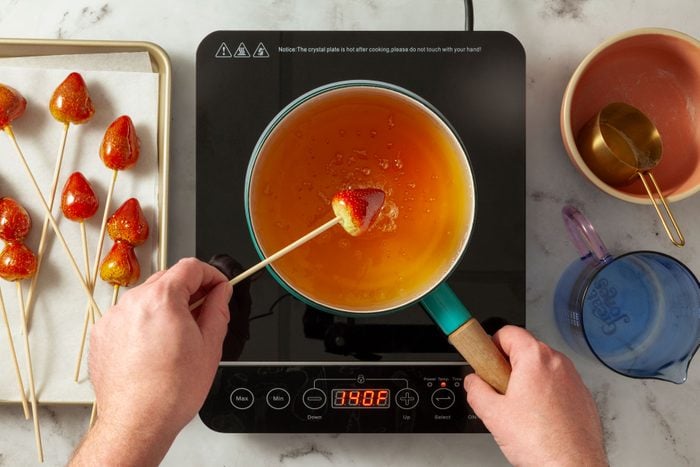
Working quickly, dip each berry into the syrup. Then, place the skewer on a parchment-lined baking sheet. Let them stand for two to three minutes until the sugar has hardened. Serve immediately.
Editor’s Tip: Carefully tilt the saucepan to help the syrup pool. It’s better to dip the strawberries into the pooled syrup than spoon the syrup onto the fruit. Spooning the syrup creates bubbles and results in a cloudy candy shell. It will also cause the syrup to cool faster and crystallize.
Tanghulu Variations
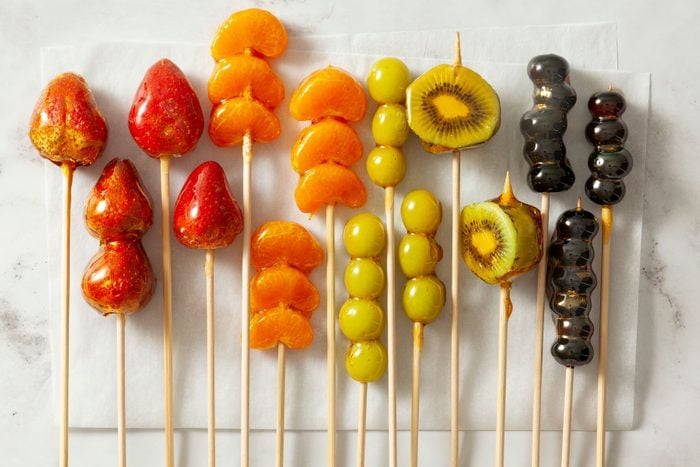
- Make it with other fruits: You can use any firm, tart fruit to make tanghulu. Experiment with different types of fruit, like blueberry, green grapes, kiwi, mandarin oranges or even cherry tomatoes. It’s best to avoid sliced juicy fruits, as the moisture makes it challenging for the syrup to adhere. And because the candy shell is so sweet, tart fruits seem to work best for tanghulu.
- Add corn syrup: To fool-proof your recipe, add 1/4 cup of corn syrup to the sugar and water mixture to prevent the syrup from crystallizing. Keep in mind that your syrup will reach the hard-crack stage faster with the addition of corn syrup.
- Add extra flavor and texture: Get creative! Add honey for flavor, or roll the tanghulu in toasted sesame seeds, sprinkles or crushed nuts for texture. Some tanghulu makers also add food coloring to the syrup for an extra pop of color.
How to Store Tanghulu
Tanghulu is best enjoyed immediately, as the candy shell will become harder over time. If you have leftovers, you can store tanghulu in an airtight container in the refrigerator for up to three days. Tanghulu made with firmer, less juicy fruits tend to hold up best, but some fruits don’t hold up well to storage because they are slightly cooked by the hot syrup.
Tanghulu Tips
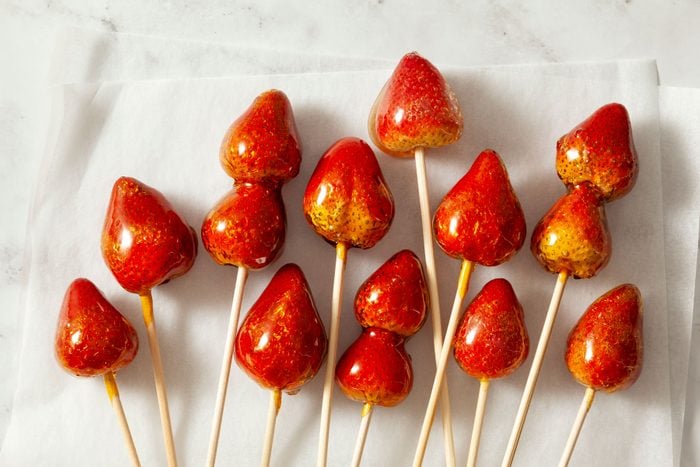
Can you make tanghulu without a candy thermometer?
Candy thermometers are helpful candy-making tools, but you don’t need one to make tanghulu. If you don’t have a thermometer, use the cold-water test to determine when the syrup has reached the hard-crack stage. Fill a small glass bowl with cold water, and dip a metal spoon into the hot syrup. Drop a small amount of syrup into the cold water. The syrup should form a ball in the water and maintain a hard yet pliable consistency.
Why is tanghulu sticky instead of crunchy?
If the tanghulu is sticky or sticks to your teeth, you may not have heated the syrup to the proper temperature. The syrup will stick to the fruit if it reaches the soft-crack stage, but it will have a chewy consistency.
